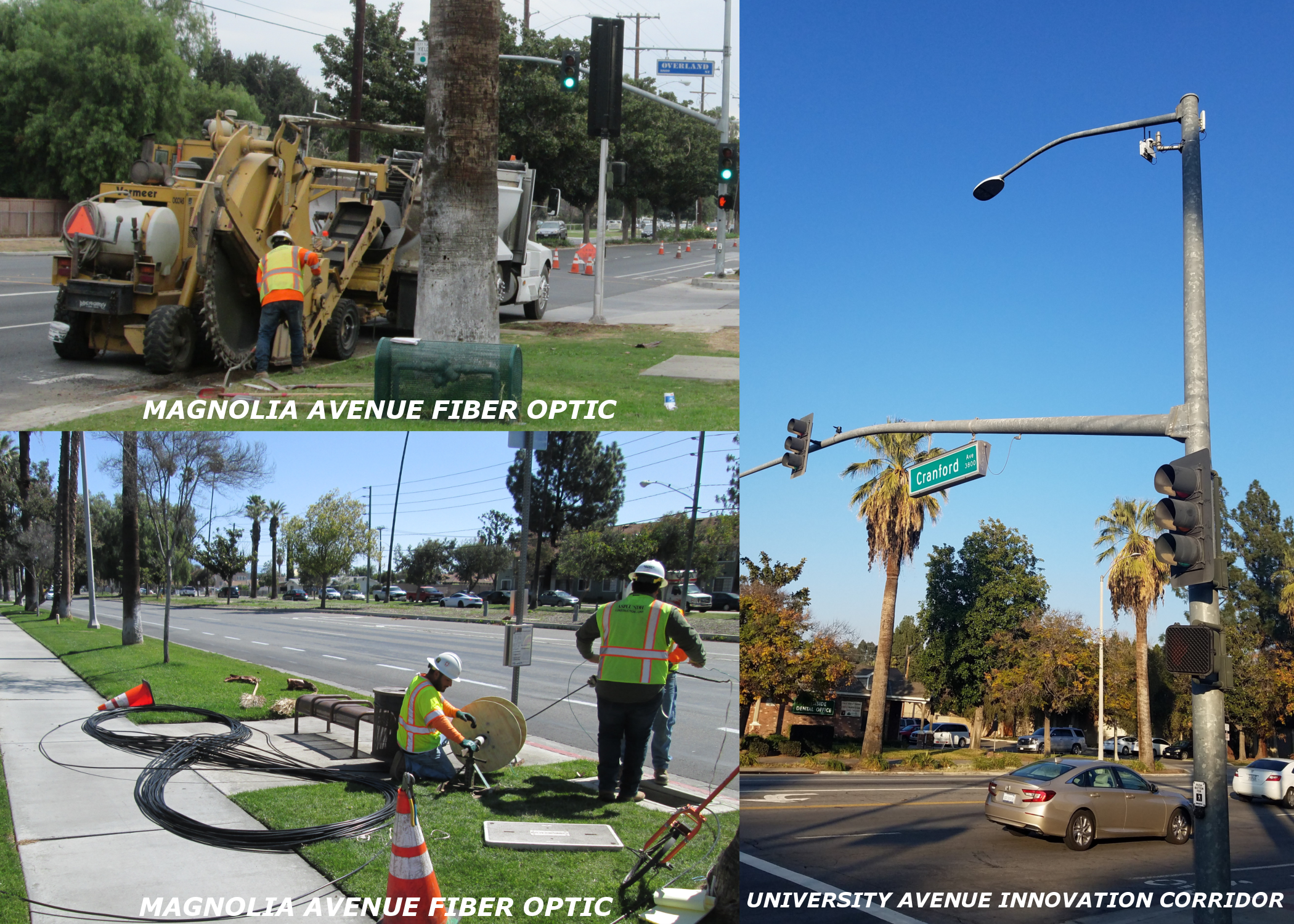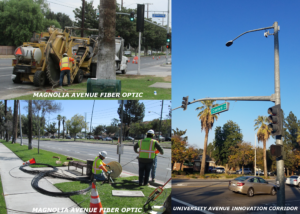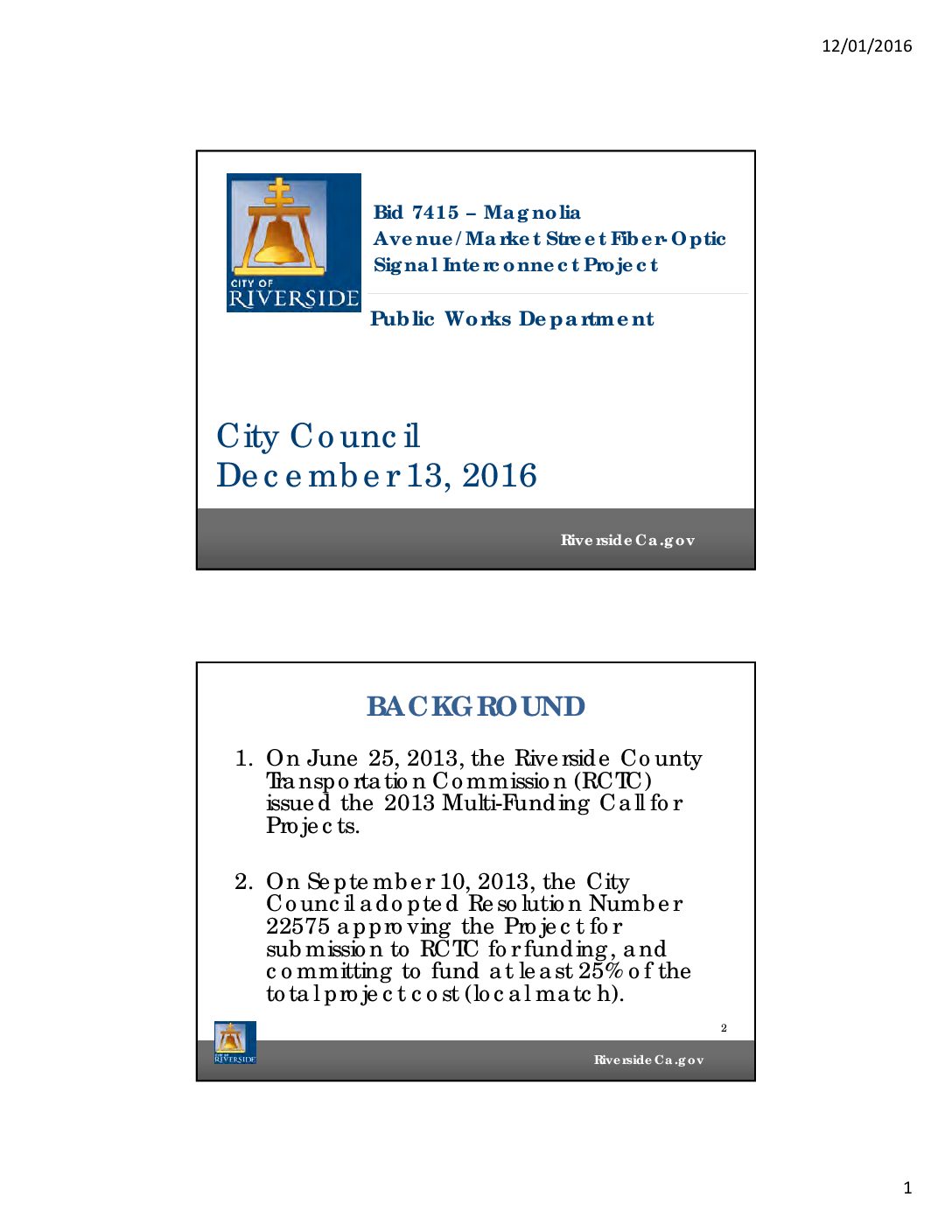City of Riverside ITS Connectivity and Connected Vehicle Technology Initiatives
Location
Magnolia and University Avenues within the City of Riverside
City or County Responsible for Project
Riverside
Author
Nathan Mustafa
City of Riverside
3900 Main Street
9518262251
Project Description
Magnolia Avenue spans nearly the entire length of the City of Riverside, linking major centers of commerce such as the Galleria at Tyler and Riverside Plaza, medical institutions such as the Kaiser Medical Center and Riverside Community Hospital, educational institutions including Cal Baptist University and Riverside City College, the Central Business District, our neighboring agencies, and State Routes 91 and 60. In November of 2018 10.5 miles of fiber optic cabling went ‘live’ along Magnolia Avenue, spanning 49 signalized intersections; a project funded through a combination of Federal CMAQ and State MSRC grant dollars. This project has enabled Riverside to deploy additional traffic monitoring cameras, rapidly deploy and adjust traffic signal timing and coordination plans, and sets the stage for future connected/autonomous vehicle, adaptive signal control, and enhanced transit priority projects. Magnolia Avenue is currently served by the Riverside Transit Agency’s Rapid Link Gold Line – which operates at 15 minute headways during peak hours of traffic; headways along the Gold Line will be enhanced by improved signal operations resulting from the Magnolia Avenue Fiber Optic Project. The Gold Line connects from Magnolia Avenue to University Avenue, and ultimately terminates at the future site of the University of California, Riverside’s Mobility Hub (UCR). Accordingly, University Avenue is another focus area for Smart City enhancements in the City of Riverside, and is referred to as Riverside’s Innovation Corridor. The City of Riverside has entered into an innovative Memorandum of Understanding with the UCR College of Engineering Center for Environmental Research and Technology (CE-CERT) to facilitate the testing of smart corridor technology. Intersections along the corridor have been equipped with advanced traffic signal controllers and Dedicated Short Range Communication transceivers, which allow the traffic signals to broadcast their signal phase and timing and geometric intersection description information to connected vehicles. By broadcasting this information to connected CE-CERT research vehicles, the City and UCR can pilot software to improve safety, mitigate traffic congestion, and ultimately reduce transportation related carbon footprint and pollutant emissions. The Magnolia Avenue Fiber Optic project has allowed for greater connectivity via high bandwidth radio equipment along the University Avenue Innovation Corridor. The dedicated short range communications radios already deployed along the Innovation Corridor have the potential to enhance the transit operations of the RTA Gold Line. In October of 2018, UCR’s Center for Environmental Research and Technology successfully began testing of their Eco-Approach and Departure Connected/Autonomous Vehicle (CAV) technology along the Innovation Corridor. The City aims to use this testbed to inform potential CAV technology along the entirety of the Magnolia Avenue Fiber Optic Backbone.




Add Comment